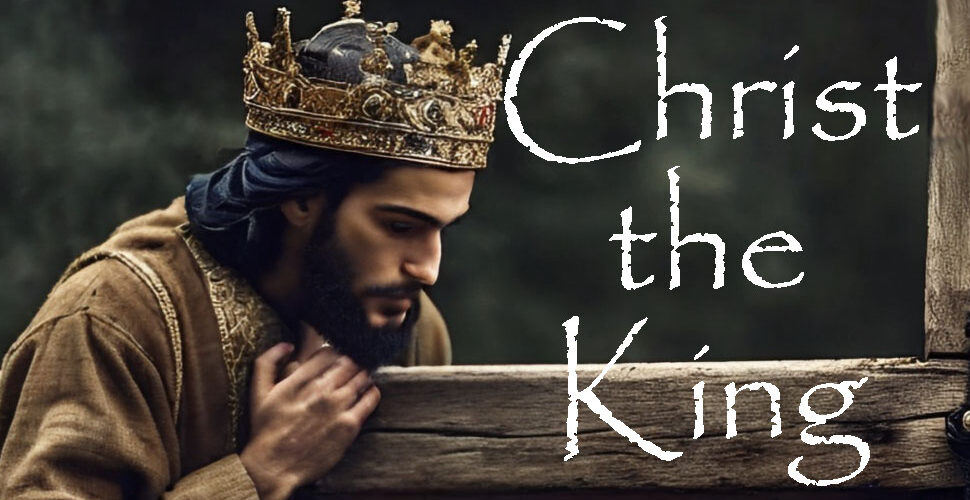The Work of the King
Podcast: Play in new window | Download
Subscribe: RSS
SUBJECT: Christ the King
PROPOSITION: The Work of the King is to 1) Perform Spiritual Circumcision, 2) Give Life to the Dead, 3) Conquer the Enemy.
OBJECTIVE: Each person may know how the King does His work in us.
AIM: Each person may understand that the King has a work to do, and He does it.
INTRODUCTION:
1. Read: Colossians 2:11-15
2. About the Text:
1) All kings have a work to do.
a. Celebrating the People
b. Writing legislation.
c. Upholding justice.
d. Conquering Enemies
2) As King, Jesus also has a work to do.
3) That work is set forth here in Colossians 2:11-15.
3. Ref. to S, T, P, O, and A.
DISCUSSION: The Work of the King is to . . .
I. Perform Spiritual Circumcision (11-12)
1. Circumcision
1) It is the act of cutting around and cutting off.
2) Paul is not discussing literal circumcision practiced by the Jews.
3) “For in Christ Jesus neither circumcision nor uncircumcision avails anything, but faith working through love” (Galatians 5:6).
4) He is talking about circumcision of the heart
5) “But he is a Jew who is one inwardly; and circumcision is that of the heart, in the Spirit, not in the letter; whose praise is not from men but from God” (Romans 2:29).
6) This is spiritual circumcision.
2. Who does this circumcision?
1) Physical circumcision was done by hands.
2) This circumcision is “Made without hands.”
3) This is “the circumcision of Christ.”
4) Christ pronounces the forgiveness of sins by the blood of the covenant.
5) “For this is My blood of the new covenant, which is shed for many for the remission of sins” (Matthew 26:28).
3. What is being cut off?
1) In physical circumcision, skin is being cut off.
2) In spiritual circumcision, “the body of sins” is being cut off.
3) In other words, the “body” of sins refers to every single sin a person had committed.
4. When does this circumcision take place?
1) This circumcision happens when a person is baptized.
2) It is not the preacher who forgives sins.
3) It is not the water that forgives sins.
4) It is Christ who forgives the sins based on His promise (Mark 16:16).
5) This forgiveness depends upon the faith of the individual.
6) He must have faith “in the working of God.”
7) The “working of God” is what God did to raise Jesus from the dead.
8) Just as God raised Jesus from the dead, the same work of resurrecting the dead is done to us when we are baptized.
9) This is why we can say that when a person is baptized, he is raised with Christ.
a. The person being baptized does not do this work.
b. The person baptizing does not do this work.
c. The water does not do this work.
d. Only God in Christ does this work.
II. Give Life to the Dead (13-14)
1. Spiritual Death.
1) Spiritual death is not “feeling dead.”
2) A person may feel very “alive” and yet be spiritually dead.
3) “But she who lives in pleasure is dead while she lives” (1 Timothy 5:6).
2. Spiritual death is being separated from God.
1) “But of the tree of the knowledge of good and evil you shall not eat, for in the day that you eat of it you shall surely die” (Genesis 2:17).
2) “The wages of sin is death” (Romans 6:23a).
3) Everyone who comes to Jesus must first be spiritually “dead in [his] trespasses.”
3. Jesus makes us alive together with Him.
1) Being made alive does not mean “feeling alive.”
2) Being made alive means restoring fellowship with God.
3) He forgives us of all of our sins/trespasses/faults.
4) The word for “trespass” means literally to fall, so these are our faults.
4. How does Jesus forgive us our trespasses/faults?
1) He wiped out the handwriting of requirements.
a. This refers to the law of Moses.
b. It was written by Moses hand.
2) It was against us and contrary to us.
a. The law of Moses could only condemn.
b. “For as many as are of the works of the law are under the curse; for it is written, Cursed is everyone who does not continue in all things which are written in the book of the law, to do them” (Galatians 3:10).
c. “Therefore by the deeds of the law no flesh will be justified in His sight, for by the law is the knowledge of sin” (Romans 3:20).
3) He took it out of the way by nailing it to the cross.
a. Jesus did not come to destroy the law, but to fulfill it (Matthew 5:17).
b. Jesus lived a sinless life; he fulfilled the law (1 Peter 2:22).
c. The penalty for sin was death (Romans 6:23).
d. But Jesus did not deserve that penalty because he did no sin (2 Corinthians 5:21).
e. What does a righteous judge do when someone has been punished without cause?
f. So God raised Jesus from the dead.
g. “whom God raised up, having loosed the pains of death, because it was not possible that He should be held by it” (Acts 2:24).
h. What happens to the instrument responsible for putting an innocent man to death?
i. It must be removed; the law was nailed to the cross.
j. The law of Moses no longer stands between man and God; Jesus is there now.
4) Because Jesus replaced the law with Himself, He is the New Covenant of God.
a. The blood of Christ is the blood of the New Covenant (Matthew 26:28)
b. God gave Jesus all authority (Matthew 28:18).
c. Under the New Covenant, Jesus saves those who obey Him (Hebrews 5:9).
d. Jesus, by command, has established baptism as the “when” of salvation (Mark 16:16).
III. Conquer the Enemy (15)
1. Opima Spolia – Spoils taken in single combat.
2. Jesus disarmed/spoiled principalities and powers.
1) This means that He took away their authority.
2) He disarmed Satan.
3) He disarmed the demons.
4) He disarmed men of power.
5) He disarmed governments of men from dictating the terms of salvation.
6) He disarmed everything that stood against a person’s salvation.
7) Nothing stands in the way of those who are saved by Jesus.
8) Romans 8:37-39
3. He made a public spectacle of them.
1) This verse refers to the parade that conquerors would have after a successful military campaign.
2) Two things would happen in these parades.
a. The enemies would be bound in chains as they were marched before the spectators.
b. The spoil/loot/riches captured would be on display for all to see.
4. Jesus marched in triumph after his victory on the cross.
1) He conquered the enemy bringing it back captive.
2) He brought back the spoils of conquest, the souls of men.
3) “Inasmuch then as the children have partaken of flesh and blood, He Himself likewise shared in the same, that through death He might destroy him who had the power of death, that is, the devil, and release those who through fear of death were all their lifetime subject to bondage” (Hebrews 2:14-15).
4) “The sting of death is sin, and the strength of sin is the law. But thanks be to God, who gives us the victory through our Lord Jesus Christ” (1 Corinthians 15:56-57).
CONCLUSION:
1. The Work of the King is to …
1) Perform Spiritual Circumcision
2) Give Life to the Dead
3) Conquer the Enemy
2. Invitation


